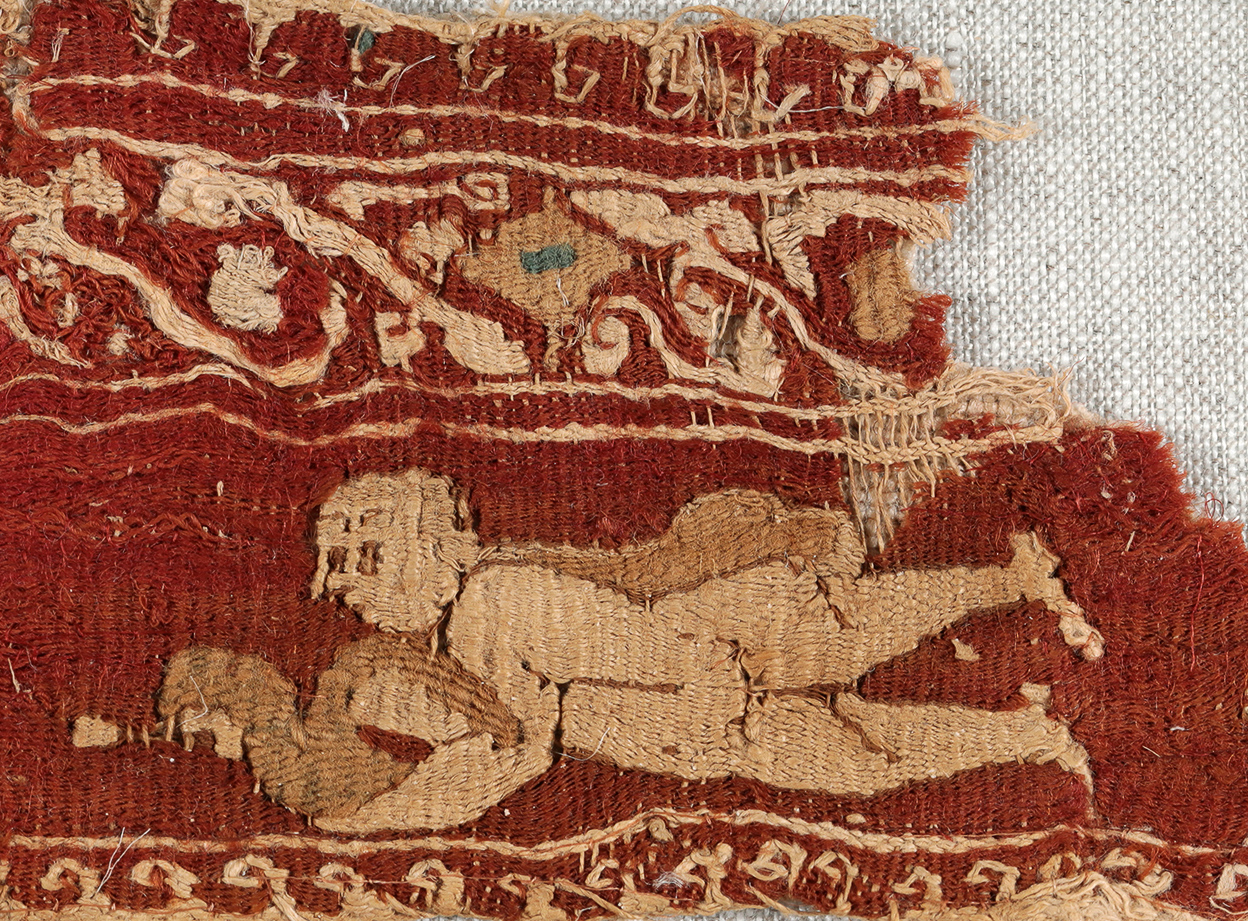Three nude putti on a crimson background, each with a mantle on the shoulders and holding a duck, swim along a foliated scroll. Two wave scroll friezes frame the composition.
Origin:
Egypt
Date:
5th - 8th century
Material:
Linen and wool
Dimensions:
1) Warp: 3.2 cm, weft: 7.2 cm;
2) Warp: 6 cm, weft: 13.2 cm
Comparisons:
Cleveland Art Museum inv. 1982.378.
Abegg-Stiftung, inv. 2375.
MAK, Vienna, inv. T 376-1883: swimmers and lions.
The origin of this iconography lies in Nilotic scenes where putti were traditionally shown swimming or playing amidst acquatic animals.
Provenance:
Collection Coptic textiles Fill-Trevisiol: donation
Location:
Musée royal de Mariemont
Linen and woollen tapestry
I. Ground weave
(2) folded border of the band
Warp:
(2) natural-coloured linen S: +/-40/cm
Weft:
(2) weft-faced tabby
Weave:
extended tabby
(2) folded border of the band
Warp:
(1) natural-coloured linen S: 13/cm
(2) coloured linen S: 10-12/cm: single warp
Weft:
(1) red wool Z: 44/cm; brown wool Z; natural-coloured wool S: 21/cm; brown lines between legs of figure: linen S
(2) red wool Z: 48/cm; brown wool Z; blue wool Z; natural-coloured linen S: 21/cm; brown lines between legs of figure: linen S
Weave:
(1) extended tabby: irregular units of 2 and 3 warp yarns
Special techniques:
(1) slit tapestry, eccentric weft
(2) slit tapestry, eccentric weft
Dyes analysed:
Dyes analysed from the biggest fragment:
Weft thread: red Z wool: kermes

